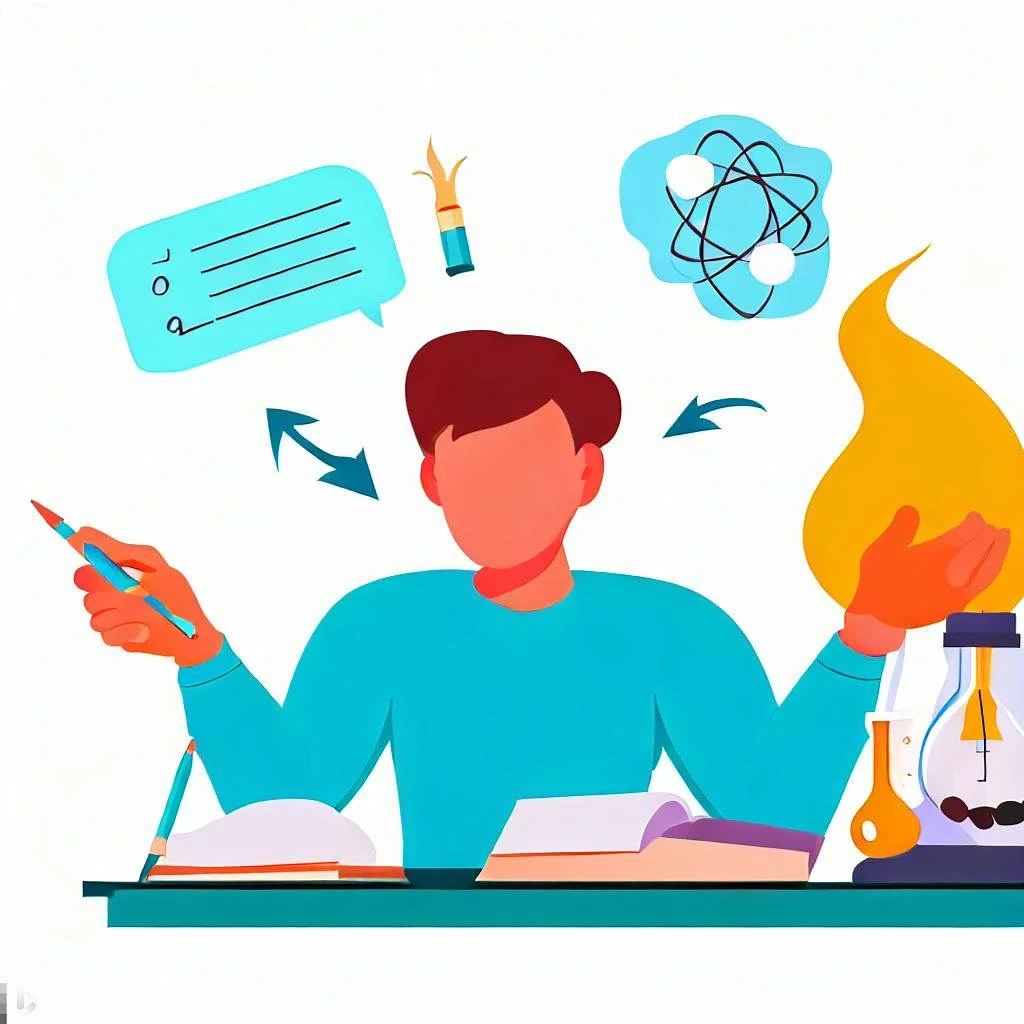From Errors to Excellence: Enhancing Your Thermodynamics Assignment Grades with Avoidance of Common Mistakes

Chemistry's fascinating field of thermodynamics explores the study of energy and how it changes in various systems. It is frequently regarded as a difficult subject for students but is essential to understanding how matter behaves. Students frequently commit common errors when completing thermodynamics assignments, which can negatively affect their grades. We will discuss these frequent mistakes in this blog and offer helpful advice on how to enhance your grades on thermodynamics assignments. Students can improve their comprehension of fundamental ideas, problem-solving strategies, and thermodynamic diagram interpretation by correcting these errors. We will discuss the significance of correctly interpreting the laws of thermodynamics, correctly applying the sign convention, and correctly understanding various thermodynamic processes. We will also stress the importance of time management, thorough problem analysis, and maintaining consistency in units and dimensions. Students can improve their performance on thermodynamics assignments and get better grades by avoiding these common blunders and putting effective strategies into practice.

Mistakes in Understanding Basic Concepts
Misunderstandings of fundamental concepts are one of the biggest obstacles in thermodynamics assignments. Students frequently make common mistakes that prevent them from understanding basic concepts. The sign convention is frequently overlooked, which can result in incorrect solutions. Thermodynamics depends on the proper interpretation of signs linked to variables like work and heat, and ignoring these conventions can cause confusion and yield incorrect results. Another error is interpreting the thermodynamic laws incorrectly. Energy cannot be created or destroyed, even though the first law emphasizes energy conservation in closed systems. In this regard, misconceptions can result in flawed reasoning and incorrect conclusions. Inadequate understanding of thermodynamic processes is another issue. There are specific characteristics and equations that must be correctly applied for various processes, including isothermal, adiabatic, isobaric, and isochoric. Incorrect solutions can result from failing to recognize and use the proper equations for a given process. Students should make sure they have a firm grasp of sign conventions, comprehend the true implications of thermodynamic laws, and become familiar with a variety of processes and the corresponding equations in order to avoid making these errors.
Neglecting the Sign Convention
Neglecting the sign convention is one of the most frequent errors made in thermodynamics assignments. The concept of energy flow underlies thermodynamics, and the signs corresponding to various variables, such as work and heat, are crucial. For instance, work performed on a system is viewed as positive, whereas work performed on the system itself is viewed as negative. It can be confusing to solve problems and produce incorrect answers if the proper sign convention is not taken into account.
Misinterpreting the Laws of Thermodynamics
A set of fundamental laws that control the transformation and transfer of energy form the foundation of thermodynamics. One error that students frequently commit is misinterpreting these laws. As an illustration, the first law of thermodynamics asserts that energy is conserved in a closed system but makes no mention of the possibility of energy creation or destruction. It is essential to comprehend the precise formulations and applications of the laws of thermodynamics in order to complete your chemistry assignment correctly.
Inadequate Knowledge of Thermodynamic Processes
Students also frequently lack a thorough understanding of various thermodynamic processes. Isothermal, adiabatic, isobaric, and isochoric processes are examples of thermodynamic processes. Each of these processes is associated with a set of characteristics and equations. Incorrect solutions may result if the proper equations for a given process are not recognized and used. To prevent making this error, you must become familiar with these processes and the corresponding equations.
Errors in Problem-Solving Techniques
The accuracy of thermodynamics assignments can be significantly impacted by mistakes in problem-solving techniques. Paying insufficient attention to units and dimensions is a common error. Calculations in thermodynamics rely heavily on maintaining unit consistency. Incorrect results can result from unit confusion or improper conversion. To ensure accurate results, it is essential to double-check units and make the necessary conversions. Another common mistake in problem analysis is a lack of clarity. Students frequently jump right into problem-solving without fully comprehending the information and variables provided. Without a thorough understanding of the issue, they might use flawed equations or forget crucial information. For effective problem-solving, it is crucial to take the time to carefully analyze the issue, identify crucial details, and develop a clear strategy. Rounding errors and ignoring the significance of significant figures can also have an impact on the accuracy of results. Maintaining the correct number of significant figures and managing rounding appropriately throughout calculations are essential. Students can improve their problem-solving skills and raise the accuracy of their thermodynamics assignments by paying close attention to units, thoroughly analyzing problems, and maintaining precision in calculations.
Insufficient Attention to Units and Dimensions
In order to solve problems involving thermodynamics, units, and dimensions are essential. Students frequently forget how crucial it is to keep the units constant throughout their calculations. Incorrect answers can be obtained from unit confusion or improper conversion. To avoid this error, double-check your units and make the necessary conversions before starting any calculations.
Lack of Clarity in Problem Analysis
Students frequently make the error of not fully understanding the problem at hand before attempting to solve it. It is essential to recognize the important facts and variables mentioned in the inquiry. You run the risk of using incorrect equations or omitting crucial information if you don't have a clear understanding of the issue. Prior to beginning your calculations, take the time to read the problem thoroughly, highlight critical information, and create a clear strategy.
Flaws in Understanding Thermodynamic Diagrams
Assignments in thermodynamics can be very difficult if you don't understand thermodynamic diagrams. The incorrect interpretation of PV diagrams is one frequent error. The relationship between pressure and volume during a thermodynamic process is represented visually in these diagrams. However, students frequently struggle to correctly interpret the diagram's axes' orientation, distinguish between different curves and paths, and comprehend the significance of certain regions. These misunderstandings may result in flawed conclusions and mistakes in problem-solving. Another common error is misinterpreting the temperature-entropy (TS) diagram. The relationship between temperature and entropy, particularly in heat transfer processes, is depicted by the TS diagram. The behavior of various substances, such as ideal gases, liquids, and solids, on the TS diagram may be difficult for students to accurately analyze, and they may also misinterpret the significance of different regions on the diagram. To overcome these shortcomings, it is essential to acquire a thorough understanding of PV and TS diagrams, practice their correct interpretation, and comprehend the relationships between pressure, volume, temperature, and entropy. Students can improve their comprehension of thermodynamic processes and problem-solving abilities in assignments by becoming proficient at interpreting thermodynamic diagrams.
Misinterpretation of PV Diagrams
The pressure-volume (PV) diagram is one of many thermodynamic diagrams that can be used to visualize and analyze thermodynamic processes. However, it's common for students to have trouble correctly interpreting these diagrams. Errors in problem-solving can result from misreading the direction of the axes, incorrectly identifying various curves or paths, or failing to comprehend the importance of certain regions on the diagram. To get past this obstacle, practice interpreting PV diagrams and comprehend the connections between pressure, volume, and various thermodynamic processes.
Misunderstanding the Temperature-Entropy (TS) Diagram
Another crucial tool in thermodynamics is the temperature-entropy (TS) diagram, which is especially useful for understanding heat transfer processes. Students occasionally interpret the TS diagram incorrectly and have trouble correctly interpreting the curves. Understanding how various substances, such as ideal gases, liquids, and solids, behave on the TS diagram is essential, as is comprehending the importance of various regions on the diagram. To prevent errors in this area, become familiar with the TS diagram and practise analyzing various processes.
Lack of Practice and Time Management
Regular practice is necessary to build a solid conceptual understanding and problem-solving abilities in the subject of thermodynamics. Many students underestimate the value of practice and don't set aside enough time to complete their thermodynamics homework. Lower grades can result from difficulties using theoretical knowledge to solve complex problems due to a lack of practice. To improve your performance on assignments, you must set aside enough time to regularly practice thermodynamics problems and develop efficient time management techniques.
Conclusion
In order to improve grades and achieve better academic results, it is critical to avoid common errors in thermodynamics assignments. It is crucial to comprehend fundamental ideas, such as how to correctly apply the sign convention, correctly interpret the laws of thermodynamics, and comprehend various thermodynamic processes. Calculations can be inaccurate as a result of errors in problem-solving techniques, such as ignoring units and dimensions, performing insufficient problem analysis, and forgetting significant figures. Furthermore, errors in reading thermodynamic diagrams, such as misreadings of PV and TS diagrams, can make it difficult to solve problems and lead to false conclusions. Students can strengthen their understanding of thermodynamics and raise their grades by addressing these mistakes and implementing effective strategies, such as practicing frequently, allotting enough time for assignments, and developing strong time management skills. Always pay attention to the little things, practice problem-solving skills, and ask for clarification when necessary. By avoiding these common errors and working hard, you can succeed in your thermodynamics assignments and lay a strong foundation for success in this fascinating field of study.